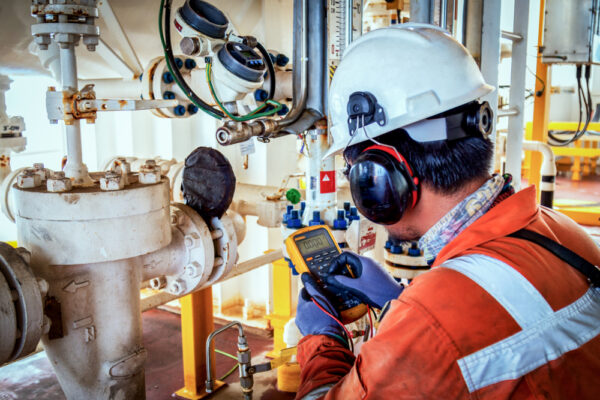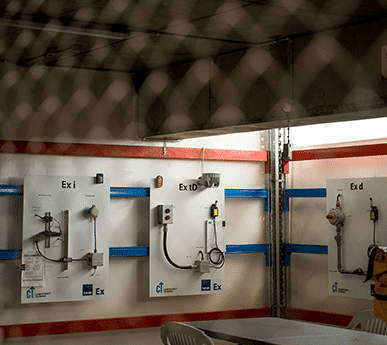Roar Solutions Can Be Fun For Anyone
Roar Solutions Can Be Fun For Anyone
Blog Article
The Ultimate Guide To Roar Solutions
Table of ContentsThe Definitive Guide for Roar Solutions10 Easy Facts About Roar Solutions DescribedSome Known Facts About Roar Solutions.
In order to protect installations from a possible surge an approach of analysing and categorizing a potentially unsafe area is needed. The purpose of this is to ensure the appropriate option and installment of devices to ultimately stop an explosion and to make certain safety and security of life.
(https://lnk.pblc.app/pub/f49b043987c7b7)
No devices must be installed where the surface area temperature level of the devices is higher than the ignition temperature of the given danger. Below are some typical dirt harmful and their minimal ignition temperature. Coal Dust 380C 225C Polythene 420C (thaws) Methyl Cellulose 420C 320C Starch 460C 435C Flour 490C 340C Sugar 490C 460C Grain Dirt 510C 300C Phenolic Resin 530C > 450C Aluminium 590C > 450C PVC 700C > 450C Soot 810C 570C The probability of the threat being present in a focus high adequate to create an ignition will differ from area to place.
In order to identify this risk a setup is divided into areas of threat relying on the amount of time the hazardous exists. These locations are referred to as Areas. For gases and vapours and dirts and fibres there are 3 zones. Zone 0 Area 20 A harmful environment is highly most likely to be existing and may be existing for extended periods of time (> 1000 hours annually) and even continually Zone 1 Area 21 A harmful atmosphere is feasible but not likely to be present for extended periods of time (> 10 450 C [842 F] A classification of T6 indicates the minimum ignition temperature level is > 85 C [185 F] Harmful area electric tools perhaps designed for usage in higher ambient temperature levels. This would indicated on the rating plate e.g. EExe II C T3 Ta + 60C( This means at 60C ambient T3 will certainly not be exceeded) T1 T1, T2, T3, T4, T5, T6 T2 T2, T3, T4, T5, T6 T3 T3, T4, T5, T6 T4 T4, T5, T6 T5 T5, T6 T6 T6 A T Course ranking of T1 indicates the maximum surface temperature level produced by the tool at 40 C is 450 C. Assuming the linked T Class and Temperature level ranking for the devices are ideal for the area, you can constantly utilize a tool with a more rigid Division rating than required for the location. There isn't a clear response to this concern however. It actually does depend on the kind of tools and what repair work need to be lugged out. Tools with particular examination treatments that can not be carried out in the area in order to achieve/maintain 3rd party rating. Should return to the manufacturing facility if it is before the tools's service. Area Repair By Authorised Worker: Difficult testing may not be needed nevertheless details procedures may need to be complied with in order for the devices to keep its 3rd party rating. Authorised personnel should be utilized to do the work properly Repair service have to be a like for like substitute. New component have to be considered as a direct substitute calling for no unique screening of the devices after the repair service is total. Each item of tools with a hazardous ranking should be evaluated independently. These are outlined at a high degree listed below, however, for even more comprehensive info, please refer directly to the guidelines.
Getting The Roar Solutions To Work
The devices register is a comprehensive data source of equipment documents that consists of a minimum set of areas to identify each product's area, technical specifications, Ex classification, age, and ecological data. This info is crucial for tracking and taking care of the equipment successfully within unsafe locations. On the other hand, for regular or RBI tasting evaluations, the quality will certainly be a combination of In-depth and Close examinations. The ratio of In-depth to Shut inspections will be figured out by the Tools Risk, which is evaluated based upon ignition threat (the probability of a source of ignition versus the possibility of a combustible ambience )and the hazardous area category
( Zone 0, 1, or 2). This variation will also affect the resourcing needs for job prep work. As soon as Lots are defined, you can establish sampling strategies based upon the example dimension of each Whole lot, which describes the variety of arbitrary tools items to be inspected. To identify the needed sample size, two aspects require to be evaluated: the size of the Lot and the category of evaluation, which indicates the level of effort that should be applied( lowered, regular, or raised )to the examination of the Whole lot. By incorporating the group of assessment with the Great deal size, you can then develop the ideal denial standards for a sample, implying the permitted variety of damaged products discovered within that sample. For even more information on this process, please refer to the Power Institute Guidelines. The IEC 60079 conventional suggests that the maximum period between evaluations should not go beyond 3 years. EEHA evaluations will additionally be carried out outside of RBI projects as part of set up upkeep and equipment overhauls or fixings. These examinations can be credited towards the RBI sample dimensions within the impacted Lots. EEHA examinations are carried out to recognize mistakes in electrical devices. A weighted racking up system is important, as a solitary tool may have numerous faults, each with differing levels of ignition threat. If the combined rating of both evaluations is much less than two times the mistake rating, the Whole lot is considered appropriate. If the Lot is still taken into consideration unacceptable, it needs to undertake a complete evaluation or validation, which may activate more stringent evaluation methods. Accepted Lot: The causes of any kind of faults are determined. If an usual failure mode is discovered, added equipment may need maintenance. Faults are categorized by extent( Safety, Stability, Home cleaning ), ensuring that urgent problems are analyzed and resolved promptly to reduce any type of influence on safety or operations. The EEHA database ought to track and tape the lifecycle of mistakes in addition to the rehabilitative activities taken. Implementing a robust Risk-Based Inspection( RBI )strategy is important for guaranteeing compliance and security in handling Electric Devices in Hazardous Areas( EEHA) (high voltage courses). Automated Mistake Rating and Lifecycle Monitoring: Easily handle faults and track their lifecycle to improve evaluation accuracy. The intro of this assistance for risk-based assessment additionally enhances Inspectivity's position as a best-in-class solution for governing conformity, in addition to for any kind of asset-centric examination usage situation. If you have an interest in finding out more, we invite you to ask for a demo and find how our solution can change your EEHA management procedures.
Not known Facts About Roar Solutions

In terms of explosive risk, an unsafe area is a setting in which an eruptive environment is present (or might be expected to be existing) in quantities that need special preventative measures for the construction, installment and use of tools. high voltage courses. In this post we explore the difficulties encountered in the work environment, the threat control steps, and the called for competencies to work securely
It is a consequence of contemporary life that we make, save or manage a series of gases or fluids that are regarded flammable, and a variety of dirts that are deemed combustible. These materials can, in particular conditions, develop eruptive ambiences and these can have major and heartbreaking consequences. A lot of us are familiar with the fire triangular get rid of any one of the three aspects and the fire can not take place, yet what does this mean in the context of hazardous areas? When breaking this down right into its most basic terms it is basically: a mix of a specific quantity of launch or leakage of a certain material or product, mixing with ambient oxygen, and the presence of a source of ignition.
In most instances, we can do little about the degrees of oxygen airborne, however we can have considerable influence on sources of ignition, for instance electrical equipment. Hazardous locations are recorded on the hazardous area classification illustration and are recognized on-site by the triangular "EX-SPOUSE" indication. Right here, amongst other key details, areas are divided into three kinds depending upon the risk, the chance and period that an explosive atmosphere will certainly exist; Area 0 or 20 is considered the most unsafe and Area site here 2 or 22 is considered the least.
Report this page